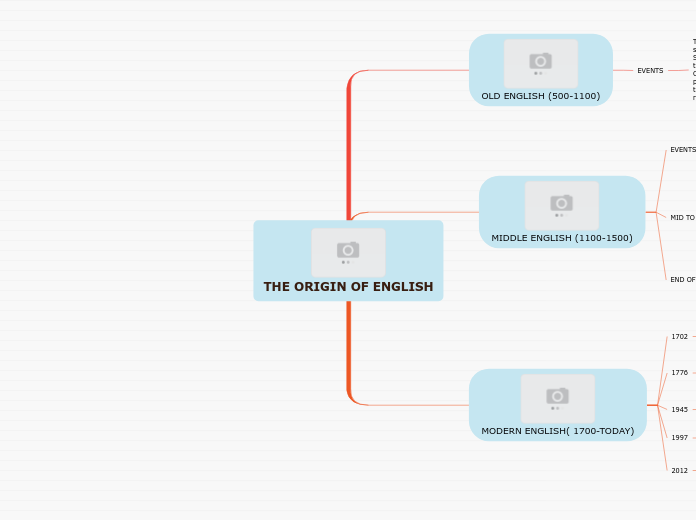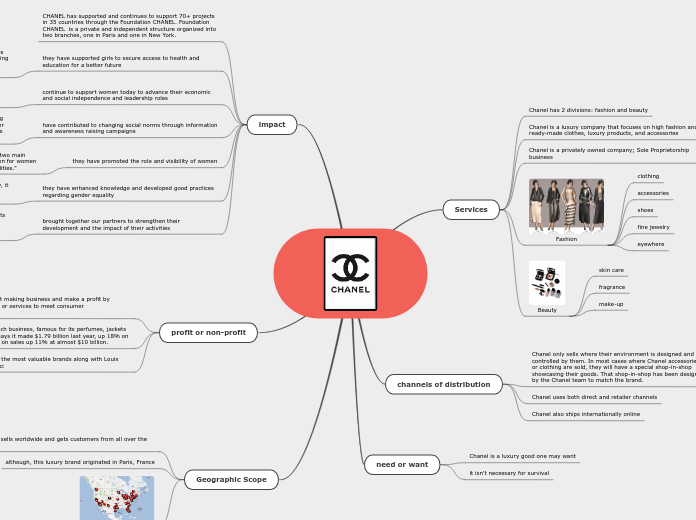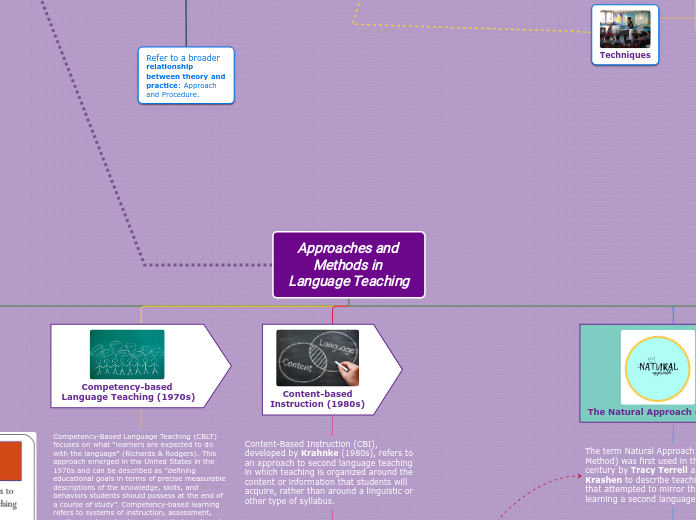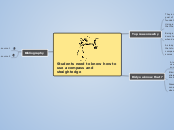THE ORIGIN OF ENGLISH
To name your story, you have to think about the overall message and what you want your audience to understand from the story. Also, make it relevant and easy to remember.
MODERN ENGLISH( 1700-TODAY)
The ending of a story is essential. We all know that if the ending is weak, what happened before loses its importance. So make it unpredictable, but fair. A resolved ending answers all the questions and ties up any loose threads from the plot.
2012
Belknap Press de Harvard University Press publica el quinto volumen (SI-Z) del Dictionary of American Regional English ( DARE ).
1997
The first social networking site (SixDegrees.com) is launched (Friendster is launched in 2002 and both MySpace and Facebook start operating in 2004).
1945
World War II ends. Allied victory contributes to the growth of English as a lingua franca.
1776
This is the closure section of the story.
See examples of possible outcomes below:
- all problems have been solved
- it's clear how each one of your characters ends up
- your main character is transformed by the challenge
The Declaration of Independence is signed and the American War of Independence begins, leading to the creation of the United States of America, the first country outside the British Isles with English as its primary language.
Try answering these questions to come up with a closure:
- Have all the problems been solved?
- Is there a clear picture of what happens with each character in the story?
- Has the challenge transformed your main character?
- How do the characters feel in the end?
1702
This is the moment when the main character surpasses the last obstacle and finally faces their greatest challenge.
The climax usually follows one of these patterns:
- realization
- resolution
- choice
Type in your answer.
The Daily Courant , the first regular English-language daily newspaper, is published in London.
MIDDLE ENGLISH (1100-1500)
The middle of the story is where you add layers of complications that will lead to the end. Reveal more about the character's journey. Did their personality go through changes? How did they overcome the challenges? And as you build up the story’s central conflict, make it more personal to that character. Also, from the middle act, you have to lead into the final act.
END OF THE XI CENTURY
There wouldn't be any tension and excitement in your story if there weren't any obstacles in your character's way.
Literacy rates increase significantly and printers begin to standardize English spelling.
A story is nothing more than a character overcoming a series of difficulties to reach the desired goal. Obstacles usually create suspense and conflict. In overcoming obstacles, there is growth: weak becomes strong; hatred turns into love; sadness into happiness; wrong into right; lies into truth; or evil becomes good.
See a few examples below:
- stopping a meteor
- finding a killer
- finding love
The monk Galfridus Grammaticus (also known as Geoffrey the Grammarian) publishes Thesaurus Linguae Romanae et Britannicae , the first book of words from English to Latin.
MID TO LATE 14TH CENTURY
Your character(s) need(s) motivation in order to solve the challenge(s).
The Great Vowel Shift begins, marking the loss of so-called "pure" vowel ("pure" vowel sounds (still found in many continental languages) and the loss of the phonetic pairings of most long and short vowel sounds.
Secondary characters also might have motivs beacuse of which they may cross path with main character or which might trigger them to help the main character.
El inglés se convierte en el idioma oficial de los tribunales y reemplaza al latín como medio de instrucción en la mayoría de las escuelas.
Why does your character need to confront this challenge? What does he/she expect to accomplish by solving it?
See a few examples:
- will marry in 3 days
- can fix the mistakes of the past
Each story has a main character and that character usually needs to solve a problem or challenge. The character's challenge is the one that creates tension throughout the story.
1215
Type in any other challenges which other characters in the story need to face.
The University of Cambridge is made up of Oxford academics.
1150
In most stories, there are 3 challenges. The number 3 is a mystical number symbolizing completeness. Try to come up with interesting challenges with which your character needs to struggle.
See a few examples below:
- turns into a werewolf at night
- is sent back in time
approximate date of the earliest surviving Middle English texts.
OLD ENGLISH (500-1100)
In the beginning of the story (or the exposition), you will need to introduce the setting and characters. You might also want to introduce the main conflict. This part of the story is important because it gives the reader necessary background information and maybe even a first insight into a character’s personality.
EVENTS
Characters are essential to a good story. Usually, the protagonist(s) is/are the most affected by the plot. Introduce a character by focusing on their actions, interests, and occupation, as the physical appearance doesn't make a difference in most cases.
The conquest of the Celtic population in Britain by speakers of West Germanic dialects (mainly Angles, Saxons and Jutes) eventually determined many of the essential features of the English language. (The Celtic influence on English survives mostly only in place names: London, Dover, Avon, York.) Over time, the dialects of the various invaders merged, giving rise to what we now call "Old English".
Type in the name of your character.
1066
What is your character's main goal?
fight Evilfind lovedefeat his/her enemyrule the worldmake friendstime travelmake an awesome discoveryOther
English is still the language of the majority. Latin is used in churches and schools. During the next century, English, for all practical purposes, is no longer a written language.
MID IX CENTURY
Which traits best describe the character's personality? Choose more if necessary:
introvertedloyalkindindependentquick-thinkingadventuresomeidealisticsweet-naturedcalmrisk-takercreativewittystrictfussyweirdclumsyharshaggressivecarelessclingingcowardlycrueldeceitfulimpulsiveOther
Danes attack England, occupy Northumbria and establish a kingdom in York. Danish begins to influence English.
VI CENTURY
Choose the type of your chacter:
Protagonist (main character)Antagonist (main character's opponent)Flat (stereotypical character)Round (his/ her personality develops throughout the story)Static (doesn't evolve as a person throughout the story)Dynamic (dramatical change in personality)Confidant (the main character trusts him/ her)Foil (contrasting character who enhances the personality of another character)Other










